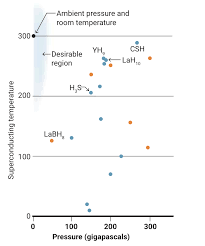
Breaking News
 Make Your Own Seasoned Rice Mixes!
Make Your Own Seasoned Rice Mixes!
 NASA Reveal Highest Resolution Visible Light and Infrared 3I/Atlas Images
NASA Reveal Highest Resolution Visible Light and Infrared 3I/Atlas Images
 We're evolving too slowly for the world we've built, according to science
We're evolving too slowly for the world we've built, according to science
 There Are No Easy Fights In The Struggle Against The Empire
There Are No Easy Fights In The Struggle Against The Empire
Top Tech News
 New Gel Regrows Dental Enamel–Which Humans Cannot Do–and Could Revolutionize Tooth Care
New Gel Regrows Dental Enamel–Which Humans Cannot Do–and Could Revolutionize Tooth Care
 Researchers want to drop lab grown brains into video games
Researchers want to drop lab grown brains into video games
 Scientists achieve breakthrough in Quantum satellite uplink
Scientists achieve breakthrough in Quantum satellite uplink
 Blue Origin New Glenn 2 Next Launch and How Many Launches in 2026 and 2027
Blue Origin New Glenn 2 Next Launch and How Many Launches in 2026 and 2027
 China's thorium reactor aims to fuse power and parity
China's thorium reactor aims to fuse power and parity
 Ancient way to create penicillin, a medicine from ancient era
Ancient way to create penicillin, a medicine from ancient era
 Goodbye, Cavities? Scientists Just Found a Way to Regrow Tooth Enamel
Goodbye, Cavities? Scientists Just Found a Way to Regrow Tooth Enamel
 Scientists Say They've Figured Out How to Transcribe Your Thoughts From an MRI Scan
Scientists Say They've Figured Out How to Transcribe Your Thoughts From an MRI Scan
 Calling Dr. Grok. Can AI Do Better than Your Primary Physician?
Calling Dr. Grok. Can AI Do Better than Your Primary Physician?
Progress to Practical Room Temperature Superconductors

Theorists have predicted other hydride compounds which could work at lower pressures. There is race to find versions stable at ambient pressure and room temperature.
In 2004, Ashcroft suggested that adding other elements to hydrogen might add a "chemical precompression," stabilizing the hydrogen lattice at lower pressures. The race was on to make superconducting hydrides. In 2015, researchers including Mikhail Eremets, a physicist at the Max Planck Institute for Chemistry, reported in Nature that a mix of sulfur and hydrogen superconducted at 203 K when pressurized to 155 GPa. Over the next 3 years, Eremets and others boosted the Tc as high as 250 K in hydrides containing the heavy metal lanthanum. Then came Dias's CSH compound, reported late last year in Nature, which superconducts at 287 K—or 14°C, the temperature of a wine cellar—under 267 GPa of pressure, followed by an yttrium hydride that superconducts at nearly as warm a temperature, announced by multiple groups this year.

 Unbanked In A Connected World
Unbanked In A Connected World

